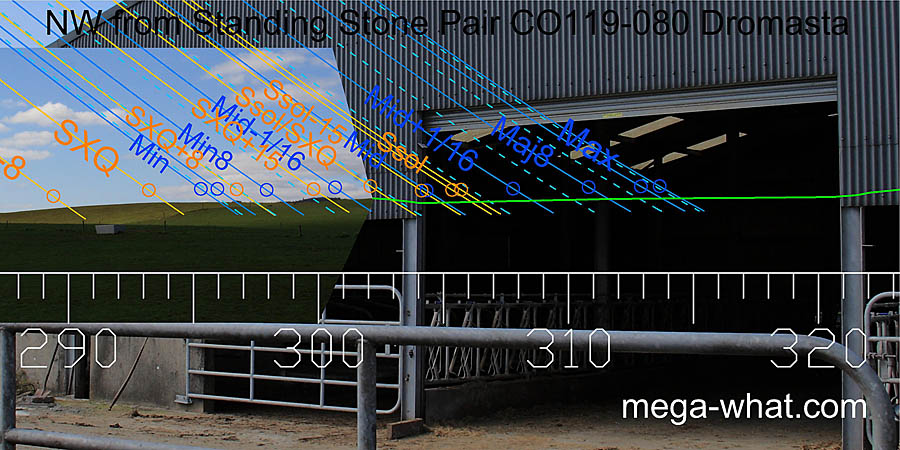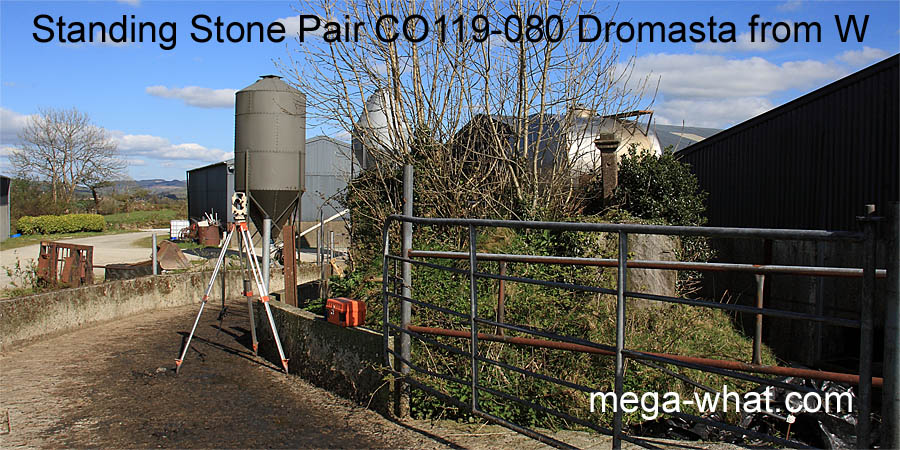 Dromasta Standing Stone Pair is in a farmyard, 1km or so west of Drimoleague and a little north of the N71. Much of the view is obscured and the stones are very overgrown.
Rather difficult to assess because of this, the stones would seem to have individual axes of about 26°.
The north-east stone is the larger of the two and the overall axis of the pair is somewhere around 50°.
Dromasta Standing Stone Pair is in a farmyard, 1km or so west of Drimoleague and a little north of the N71. Much of the view is obscured and the stones are very overgrown.
Rather difficult to assess because of this, the stones would seem to have individual axes of about 26°.
The north-east stone is the larger of the two and the overall axis of the pair is somewhere around 50°.
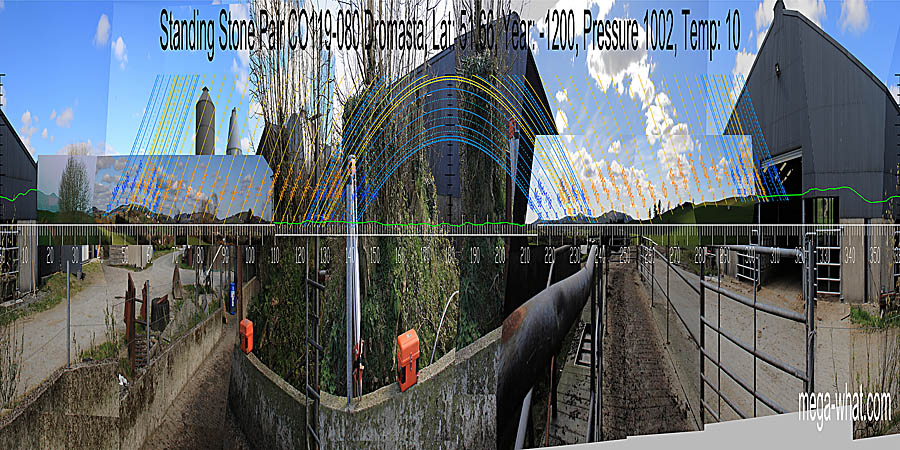 South is completely obscured and the [Pic] is not spatially accurate but contains two views of the stones.
South is completely obscured and the [Pic] is not spatially accurate but contains two views of the stones.
North is also obscured [Pic].
North-eastern and south-western lunisticeLunistices are the most northerly and southerly moons of the month. The lunar equivalent of solstices - more. zones span blocks of high ground with the solstices falling in significant positions.
Green lines, derived from SRTM 30m data approximate hidden horizon segments.
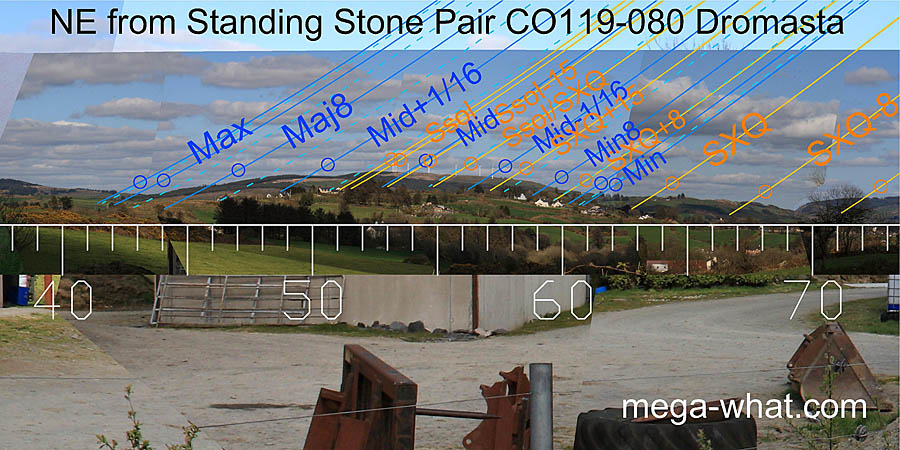 The axis of the pair is somewhere around 50°, which indicates Milane hill. The hilltop marks summer solstice.
The south basal step is the minor standstillLunistice positions vary cyclically over an 18.6 year period but are fairly static for more than a year at either end of the range
while the major standstillLunistice positions vary cyclically over an 18.6 year period but are fairly static for more than a year at either end of the range
is on the upslope following the north basal notch.
The axis of the pair is somewhere around 50°, which indicates Milane hill. The hilltop marks summer solstice.
The south basal step is the minor standstillLunistice positions vary cyclically over an 18.6 year period but are fairly static for more than a year at either end of the range
while the major standstillLunistice positions vary cyclically over an 18.6 year period but are fairly static for more than a year at either end of the range
is on the upslope following the north basal notch.
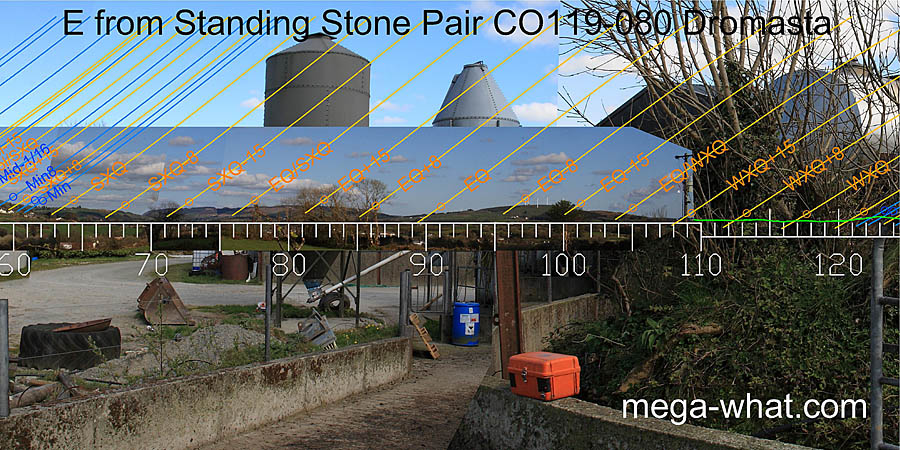 To the east, everything south of 75° is obscured. The green line is an approximation of the hidden horizon based on computer generated data with no guarantee of accuracy.
To the east, everything south of 75° is obscured. The green line is an approximation of the hidden horizon based on computer generated data with no guarantee of accuracy.
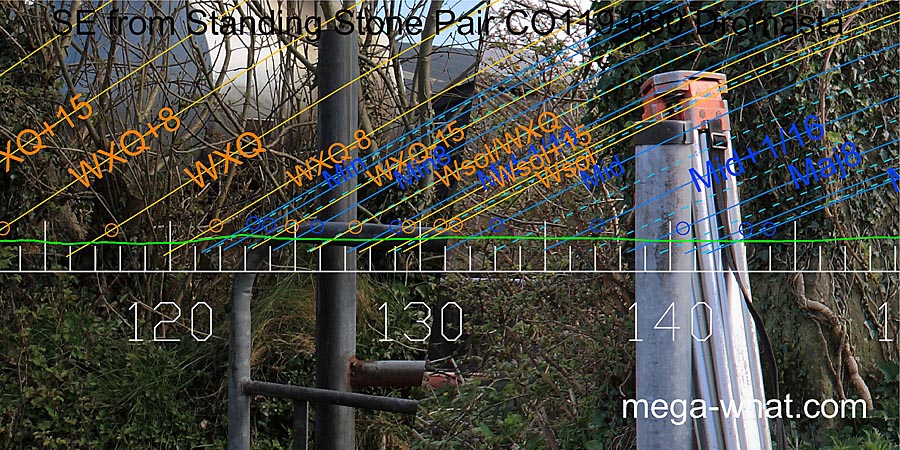 The south-eastern picture is not spatially accurate but contains a partial view of the stones.
The green line is an approximation of the hidden horizon based on computer generated data with no guarantee of accuracy.
The south-eastern picture is not spatially accurate but contains a partial view of the stones.
The green line is an approximation of the hidden horizon based on computer generated data with no guarantee of accuracy.
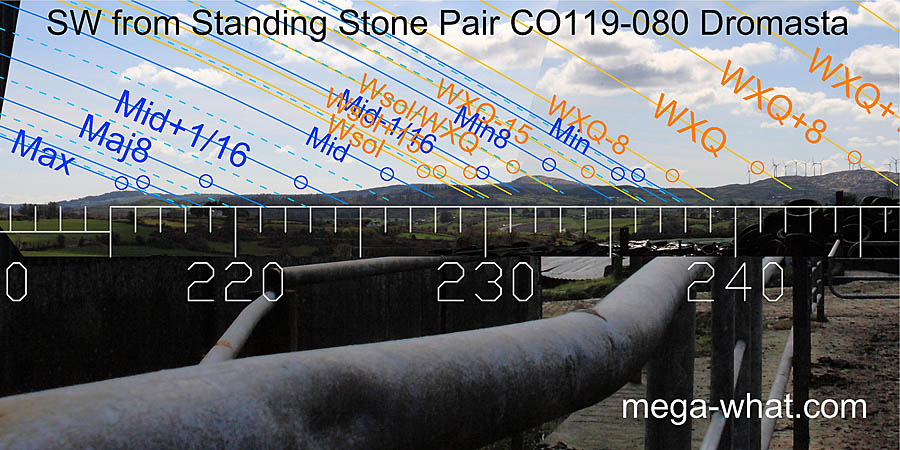 To the south-west, Coomnagoragh Mt top is a quarter-month north of the winter cross-quarter and its south base is a quarter-month south of it.
The top of Mt Kid is solstice / cross-quarter midpoint and its south base is the half-month solstitial bracket with the solstice itself on the next top.
The minor standstillLunistice positions vary cyclically over an 18.6 year period but are fairly static for more than a year at either end of the range
occurs at lowest point of the saddle between the two hills and the major standstillLunistice positions vary cyclically over an 18.6 year period but are fairly static for more than a year at either end of the range
is in the dip just to the north of the terminal hilltop of the ridge.
To the south-west, Coomnagoragh Mt top is a quarter-month north of the winter cross-quarter and its south base is a quarter-month south of it.
The top of Mt Kid is solstice / cross-quarter midpoint and its south base is the half-month solstitial bracket with the solstice itself on the next top.
The minor standstillLunistice positions vary cyclically over an 18.6 year period but are fairly static for more than a year at either end of the range
occurs at lowest point of the saddle between the two hills and the major standstillLunistice positions vary cyclically over an 18.6 year period but are fairly static for more than a year at either end of the range
is in the dip just to the north of the terminal hilltop of the ridge.
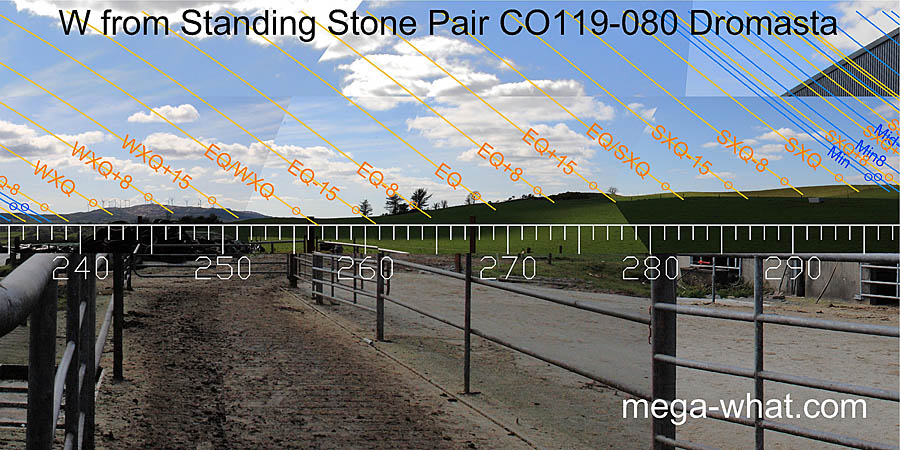 Westwards, the winter cross-quarter / equinox midpoint is in a dip.
The month centred on the equinox runs up the next rise, from its south base to its north end. The summer cross-quarter / equinox midpoint is on the next rise.
Westwards, the winter cross-quarter / equinox midpoint is in a dip.
The month centred on the equinox runs up the next rise, from its south base to its north end. The summer cross-quarter / equinox midpoint is on the next rise.
Other Standing Stone Pairs with extreme axes are:
Nearby monuments are:
- Kilmore Standing Stone Pair is 2.7km south-east (145°)
- Clodagh Stone Pair & Circle are 5.9km north-east (45°)
- Cullomane Standing Stone Pair is 7.3km west (263°)
References
- Archaeological Survey of Ireland, record details. www.archaeology.ie/archaeological-survey-ireland
- Ó'NUALLÁIN, SEÁN 1988 Stone Rows in the South of Ireland. Proceedings of the Royal Irish Academy 88c:179-256, p247, No.130.
- POWER, D. et al. 1992 Archaeological Inventory of County Cork, Volume 1: West Cork. Dublin: Stationary Office. p41, no.185.

